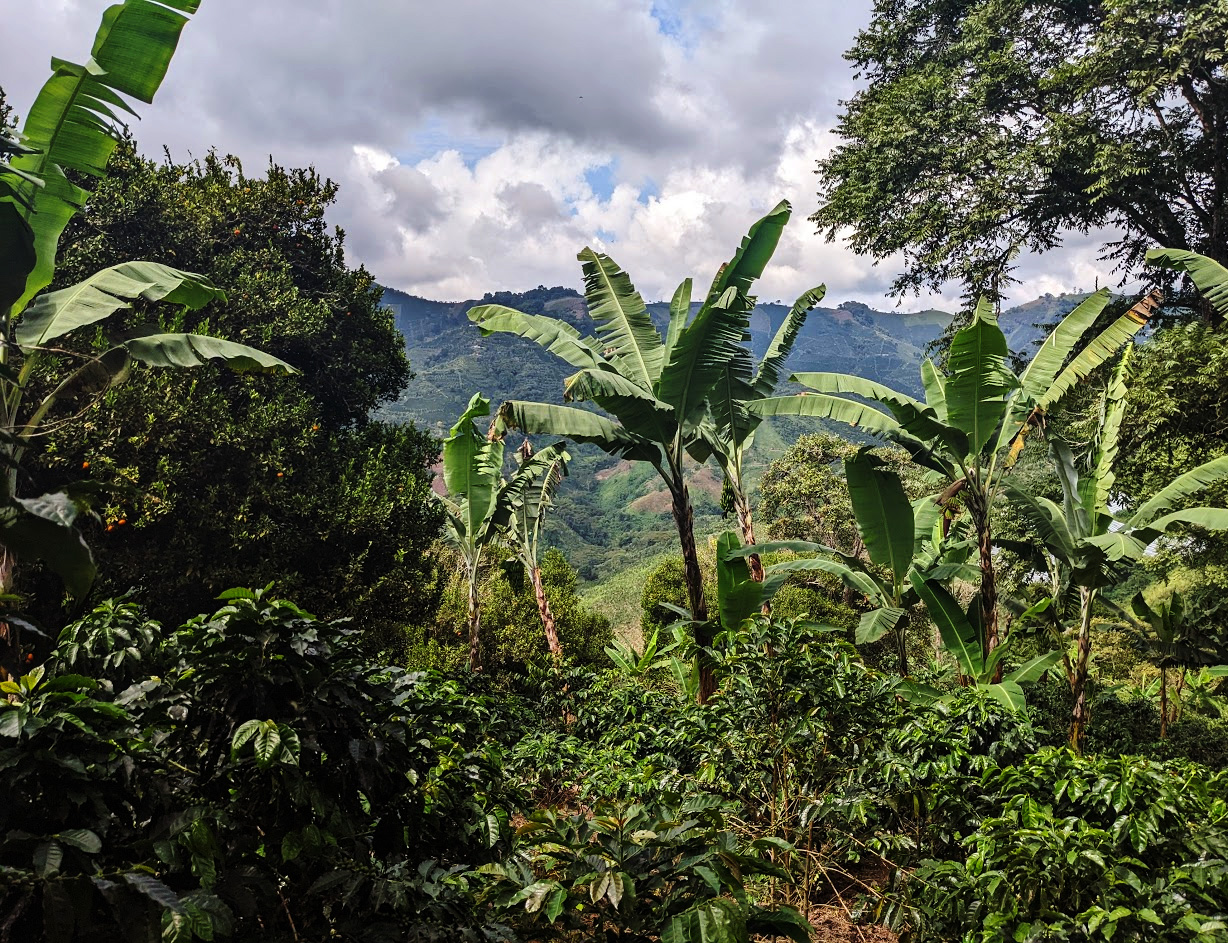Colombia is home to around 540,000 coffee producers, most of whom are smallholder farmers: 96% of Colombian farmers grow less than 5 hectares of coffee (USDA 2022). The smallest farms are most likely to rely on coffee as the main source of income, and they are also the most likely to be vulnerable to fluctuations in prices. As on smallholder farms elsewhere in the world, the entire household is usually involved in coffee production.
Most of Colombia’s coffee is grown under shade; only about 20% is grown in full sun (FNC 2017). Traditional shade trees are nitrogen-fixing legumes such as Inga (called Guamo in Colombia), trees grown for timber, and fruit trees, including banana, plantain, avocado, and citrus. At the high elevations typical for much of the coffee grown in Colombia, shade trees may adversely affect cup quality, however (Bosselmann et al 2009). The FNC recommends shade trees be used in hot and dry climates at lower elevations, and on steep terrain or in sites at risk of soil erosion (FNC 2017).
 Coffee growing in the shade of citrus and plantain trees in Risaralda
Coffee growing in the shade of citrus and plantain trees in Risaralda
The FNC encourages farmers to increase productivity by replacing their ageing trees with more-productive, rust-resistant strains, planting at higher densities, and managing the amount of shade cover. While these strategies have been successful in increasing overall yields, they don’t necessarily meet the goals of specialty-focused producers. Within the past few years, yields in Colombia have reached as high as 20 bags per hectare (AGRONET 2022), a substantial increase over previous years but well short of the average production in Brazil, which has fluctuated between 30 and 33 bags per hectare over the last few years (USDA 2022).
Trees are planted at an average density of more than 5,000 trees per hectare (USDA 2022) — one tree for every 2 square metres.